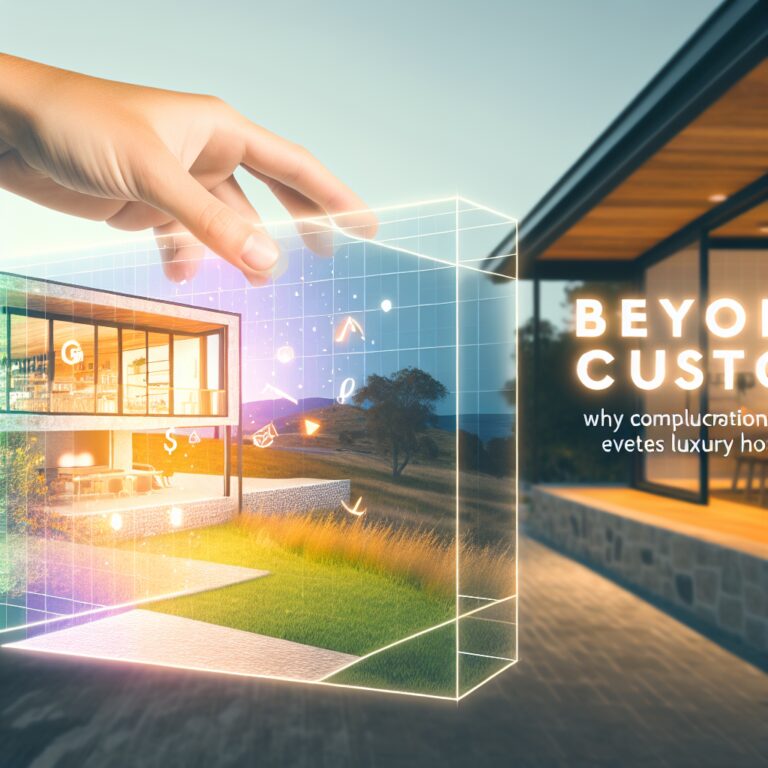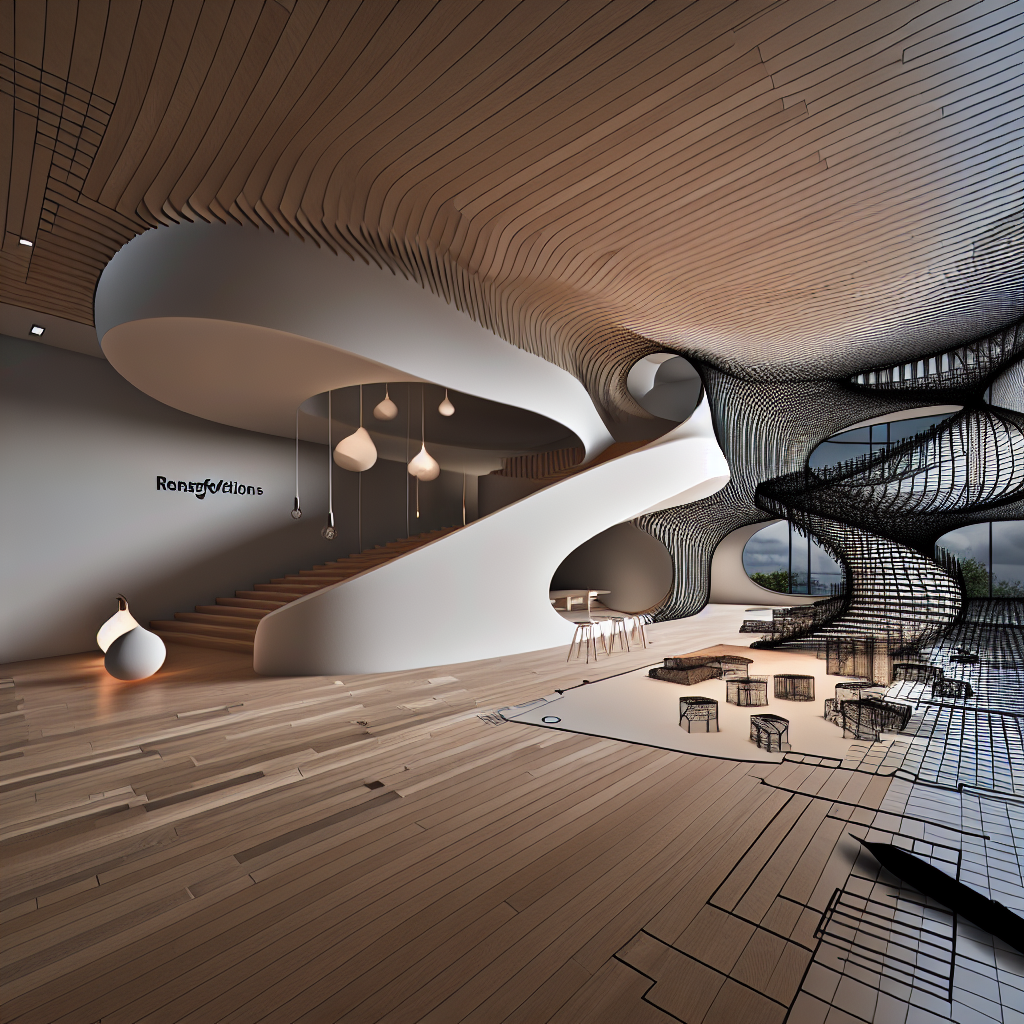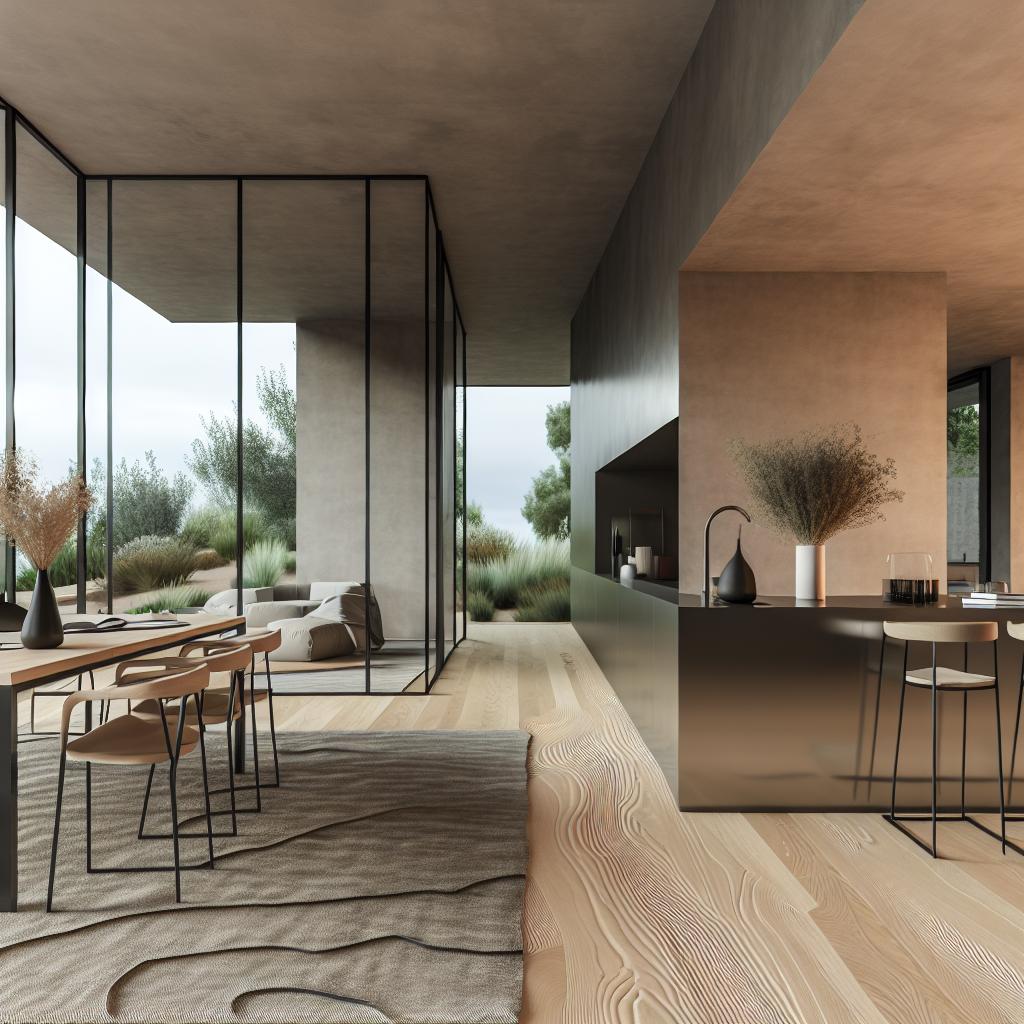In a world where luxury demands distinction, the marriage of computational design with high-end residential architecture creates spaces that transcend ordinary limitations.
*Where algorithms meet artistry, true luxury finds its most authentic expression.*
The contemporary affluent homeowner seeks more than exquisite materials and breathtaking views—they crave spaces that respond intuitively to their lifestyle, reflect their individuality, and demonstrate technological sophistication without sacrificing warmth. As parametric design tools evolve from architectural novelties into essential elements of bespoke home creation, they’re redefining what’s possible in luxury residential spaces, allowing for unprecedented customization while honoring timeless design principles.I remember the first time I stepped into a truly exceptional home—the way light played across surfaces that seemed both organic and precisely calculated, how each element felt purposeful yet effortlessly integrated. That sensation wasn’t just luxury; it was the result of intelligence embedded within every design decision.
*Where traditional custom homes satisfy, computationally designed spaces transform—creating environments that respond to our deepest human needs while pushing the boundaries of what’s architecturally possible.*
The Evolution of Luxury: From Custom to Computational
The concept of a luxury home has undergone a profound transformation in recent years. While traditional custom design once represented the pinnacle of residential architecture, today’s most exceptional spaces emerge from a more sophisticated approach. Computational design—the intersection of mathematical precision and creative vision—has redefined what’s possible in high-end residential spaces.
Soga Design Studio pioneers innovative parametric design solutions that transform ordinary spaces into extraordinary experiences. Their methodology represents a fundamental shift in how we conceive of architectural luxury—moving from spaces that are merely customized to environments that are computationally optimized.
Beyond Aesthetics: The Functional Intelligence of Parametric Design
Computational design isn’t merely about creating visually striking spaces—though it certainly accomplishes that. At its core, this approach embeds intelligent functionality within every design decision. Through computational expertise, Soga creates bespoke parametric facades, ceilings, and furniture that redefine architectural possibilities.
Consider a parametrically designed ceiling installation that:
- Optimizes natural light distribution throughout changing seasons
- Creates micro-climate zones through precisely calculated airflow patterns
- Transforms acoustical properties based on the room’s function
- Serves as a stunning visual focal point that responds to its environment
Unlike traditional luxury homes where form and function often require compromise, computational approaches allow these elements to evolve together, creating spaces that are simultaneously more beautiful and more responsive to human needs.
The Science Behind the Beauty
What makes computational design so revolutionary in luxury residential architecture is its foundation in mathematical principles that have been refined and tested across disciplines. Each Soga installation and sculpture represents a perfect marriage of artistic vision and technical precision.
The studio employs advanced algorithms and parametric modeling to solve design challenges that would be impossible through conventional methods. This scientific approach doesn’t diminish creativity—it amplifies it.
From Algorithms to Atmosphere
The journey from computational concept to realized space involves several sophisticated processes:
- Algorithmic form-finding that discovers optimal structural solutions
- Environmental simulation testing that predicts how designs will perform
- Digital fabrication methods that translate complex geometries into buildable components
- Material science applications that push boundaries of what’s physically possible
Imagine a dining room where a parametrically designed chandelier creates not just illumination but a carefully choreographed experience. The fixture might respond to the time of day, subtly shifting its light distribution to complement natural lighting conditions. Its form—perhaps inspired by natural growth patterns translated through algorithms—creates shadows that dance across surfaces in ways that would be impossible to conceive without computational tools.
Soga’s parametric approach allows them to solve complex design challenges while delivering aesthetically striking results. This methodology creates spaces that feel simultaneously avant-garde and timeless, technical and deeply human.
The Experiential Dimension of Computational Luxury
True luxury has always been about how a space makes you feel. Computational design elevates this emotional dimension by creating responsive environments that anticipate and adapt to human needs.
In a computationally designed home, the experience might include:
- Custom parametric furniture that responds to ergonomic principles while maintaining visual lightness
- Facade systems that modulate light and views while creating distinctive architectural identity
- Interior elements that create spatial narratives through carefully orchestrated transitions
- Material applications that create sensory richness through mathematically derived patterns
These elements work in concert to create what might be called an “architecture of experience”—spaces that reveal themselves gradually, reward sustained attention, and create memorable moments.
The Material Reality
While computational design begins in the digital realm, its ultimate expression is profoundly physical. Soga Design Studio’s meticulous craftsmanship elevates interior and exterior spaces to achieve a distinctly luxurious atmosphere.
The tension between digital precision and material reality creates opportunities for innovation that wouldn’t exist otherwise. When an algorithm-generated pattern must be translated into wood, metal, or concrete, new fabrication techniques often emerge. These techniques themselves become part of the design’s value, representing advancements that make each project unique.
Consider a parametric wood screen that performs multiple functions:
- Filters light through precisely calculated openings
- Creates privacy while maintaining visual connection
- Improves acoustic performance through variable density
- Expresses cultural patterns that connect to site context
The screen’s beauty emerges not just from its appearance but from the intelligence embedded within its design—the way it solves multiple challenges simultaneously through computational optimization.
The Sustainability Imperative
Perhaps the most compelling argument for computational design in luxury homes relates to sustainability. By optimizing material use, energy performance, and spatial efficiency, these approaches create high-performance environments that require fewer resources while providing superior comfort.
Through computational expertise, designs can:
- Minimize material waste through optimized fabrication processes
- Maximize passive heating and cooling through form optimization
- Create climate-responsive facades that reduce energy consumption
- Design for disassembly and material reuse at end of life
This approach transforms sustainability from a compromise to an opportunity for innovation. When computational tools optimize for both performance and aesthetics simultaneously, the resulting designs achieve a harmony that conventional approaches struggle to match.
The Future of Luxury Living
As we look toward the future of residential architecture, it’s clear that computational design will continue to redefine our expectations for luxury spaces. These environments will become increasingly responsive, adapting to changing needs, environmental conditions, and user preferences.
Soga Design Studio pioneering innovative parametric design solutions that transform ordinary spaces into extraordinary experiences. Their work points toward a future where luxury isn’t defined by ostentation but by intelligence—spaces that think alongside their inhabitants, anticipating needs and creating experiences that conventional architecture simply cannot achieve.
The most exciting aspect of this evolution is its inherently forward-looking nature. Each computationally designed project builds upon previous knowledge while exploring new possibilities. This continuous innovation ensures that these spaces remain at the forefront of what’s possible in residential architecture.
The Investment Perspective
From an investment standpoint, computationally designed homes offer compelling advantages. Their uniqueness, performance characteristics, and forward-thinking approach tend to appreciate more consistently than conventional luxury properties. More importantly, they provide a quality of experience that represents the ultimate return on investment—spaces that enhance daily life in measurable ways.
When considering a luxury home as both living environment and investment, computational design offers distinct advantages:
- Future-proof technology integration that anticipates coming innovations
- Distinctive architectural identity that stands apart from conventional luxury offerings
- Performance characteristics that reduce operating costs over the building’s lifetime
- Emotional value derived from living in a space that represents the cutting edge of design thinking
Through their parametric approach, studios like Soga create bespoke parametric facades, ceilings, and furniture that redefine architectural possibilities—and in doing so, they redefine the very meaning of luxury itself.
The true luxury of these homes isn’t measured in square footage or expensive finishes, but in the intelligence embedded within every surface, the way spaces respond to human needs, and the harmony achieved between technical sophistication and emotional resonance. Each Soga installation and sculpture represents a perfect marriage of artistic vision and technical precision—the essence of what makes computational design the future of luxury residential architecture.In Summary: Elevate Your Space, Elevate Your Life
From reimagining ceilings as canvases for creativity to transforming walls into storytellers of your journey, every element of your environment holds power. Whether refreshing a facade to inspire connection or designing interiors that reflect your values, remember:
Now it’s your turn. What will your surroundings say about you? Pause, reflect, and take one step today—whether sketching a design idea, repurposing a forgotten corner, or sharing your vision below. Let’s build spaces that don’t just shelter us, but ignite us. Drop a comment with your first move—we’re here to cheer you on! 🌟




